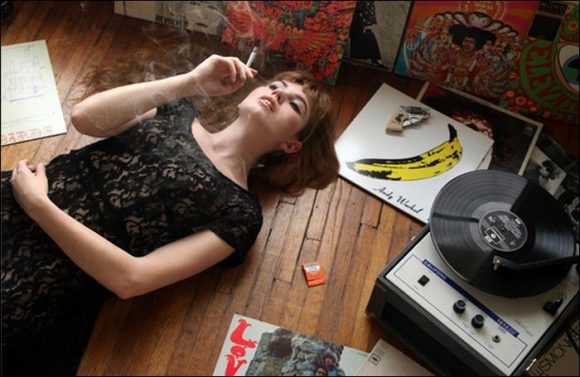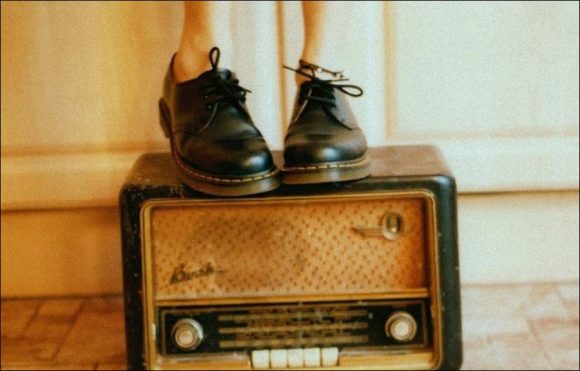You say you want a revolution? Look no further than the 1960s. The decade of political protest, sexual liberation, psychedelic drugs, eyebrow-raising fashions and sweet, sweet music.
Rock ‘n’ roll had spread from the US and marked the arrival of youth rebellion in the ‘teenager’. Music from now on would always come with a hint of rebellion. The fifties ended on the 3rd February 1959—dubbed as ‘The Day the Music Died’—marking the death of three musicians, Buddy Holly, Ritchie Valens, and J P “The Big Bopper” Richardson, in a plane crash.
This day was so poignantly marked that it began a whole new chapter for the youth of the 1960s. Inspired by the sounds of rock ‘n’ roll, young musicians were getting back to its origins and so came a new wave of folk and pure R&B revivals—styles suited to a decade of political protest.
Singers Bob Dylan and Joan Baez led the movement, and Dylan’s “Blowin’ in the Wind” (1962) became a civil rights anthem. Music had become a vehicle for social change. The protest songs and psychedelia of the 1960s were the soundtracks to a sexual revolution and anti-war marches.
Bob Dylan also produced something quite revolutionary within the music world. His second album, The Freewheelin’ Bob Dylan (1963), put Dylan on the map as a major artist. It wasn’t just his songwriting that shook the industry, it was the craft of the album.
Previously album structure had been an afterthought and the result was very formulaic, resulting in many albums leading with the second and/or third single, followed by a ballad, and side two would lead with the first single, then there would be a series of cover songs. Dylan’s album broke this formula by turning the album format into an art form in itself. Of the album, George Harrison said, “We just played it, just wore it out”.
While many white musicians were heading backwards, African-Americans based in the New Orleans continued to develop the sound of R&B. Funk began to increase in popularity. James Brown was at the forefront releasing hits such as “Papa’s Got a Brand New Bag” (1965) and “I Got You (I Feel Good)”. Funk would go on to be influenced by psychedelia giving rise to influential bands Funkadelic and Parliament, and would eventually inform disco.
In Britain, The Beatles created their own musical style with a blend of clear melodies and complex rhythms, informed by R&B. Their 1963 single “From Me to You” began an unbroken run of UK number one hits that dominated the decade, lasting until 1967.
Paul McCartney and John Lennon were the group’s chief lyricists. Their compositions included “Please Please Me” and “Hey Jude.” George Harrison’s songwriting capabilities really started to shine through around the time of The White Album (1968), perhaps reaching full potential with “Something” (1969). The Beatles stopped performing as a band in 1969 but their influenced reigns eternal.
While The Beatles reigned the chart and went on to achieve international success, R&B was also informing a new British sub-culture known as mods. The mods celebrated jazz and soul, followed British bands such as The Rolling Stones and The Kinks, and created new bands such as The Who and Small Faces.
The US meanwhile had given birth to the anti-Beatles in The Velvet Underground. Perhaps the very first art-band, Lou Reed, John Cale, Sterling Morrison et al produced music that drew influence from modernist composers (Cornelius Cardew), literature (Venus in Furs), poetry and pop music. While The Beatles were singing “Lucy in the Sky With Diamonds” and “When I’m Sixty-Four” (Sgt Pepper’s Lonely Hearts Club Band, 1967) The Velvet Underground were singing about the dark underbelly of New York sub-culture in songs such as “Heroin” and “Venus in Furs” (The Velvet Underground and Nico, 1967).
The result was sometimes unsettling but always interesting. Their involvement with Andy Warhol, although fraught, propelled their career and led to them becoming debatably the most influential band to have existed—after The Beatles that is.
Drugs also had an influence on music. Psychedelics and downers, such as marijuana and LSD, influenced psychedelia. This music was characterised by its dreamy, sometimes laid back and sometimes erratic sound. It was amplified, made use of emerging technology in guitar pedals and sound effects.
Lyrically, the songs would be about love, oneness, freedom, sexual liberation, literature, or sometimes would just be nonsensical. Bands like The Beatles, Jefferson Airplane, The Soft Parade, Jimmi Hendrix, Donovan, Pink Floyd and Captain Beefheart all varied in style but all embraced psychedelia into their sound.
The rise of a small record label called Motown in Detroit became a byword for soul music—a new singing style with its roots in gospel. Stevie Wonder, The Supremes, and Gladys Knight popularised Motown’s sound. It’s a sound that remains popular, although by the end of the decade relations with its artists were becoming strained. Motown songs were typically defined by their drum beat, clean-cut vocalists, and lyrics of lost love, or forever love.
Marvin Gaye was one of Motown’s biggest names and had recently celebrated his biggest hit “Heard it Through the Grapevine” (1968), but after the death of his long-time singing partner Tammi Terrel, Gaye became depressed and began to rebel against his clean-cut Motown image. Tiring of his creative restrictions and inspired by the witnessing of police brutality in Berkley’s People’s Park, he released his biggest album What’s Going On (1971) on Motown-subsidiary label Tamla.
Views: 347





